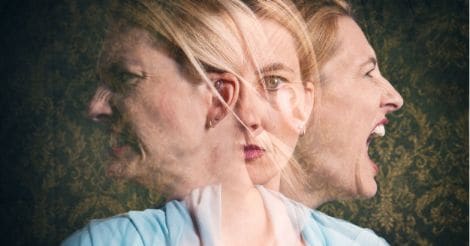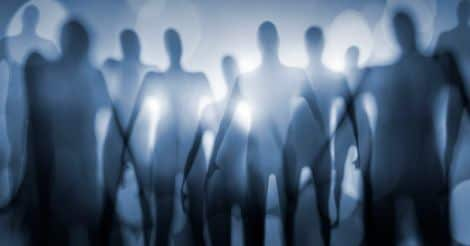The late British neurologist, Oliver Sacks, liked to narrate the call he once received from a nursing home to which he was attached. The nurses told him that Rosalie, one of their residents, a lady in her mid-90s, was seeing things, and they wondered if she’d gone bonkers, or whether she’d had a stroke or was suffering from Alzheimer’s
Sacks went over, and found that Rosalie seemed perfectly sane, lucid and intelligent. But she said she’d been startled and bewildered because she’d been seeing things.
What sort of things? “People in Eastern dress,” she said, “in drapes, walking up and down stairs. A man who turns towards me and smiles. But he has huge teeth on one side of his mouth. Animals, too. There’s a soft snow falling, and a horse in harness is dragging the snow away.

“Then one night, the scene changes. I see cats and dogs walking towards me. They come to a certain point and then stop. Then it changes again. I see a lot of children. They are walking up and down stairs. They wear bright colours, rose and blue, like Eastern dress.”
Sometimes, she said, before the people came on, she would hallucinate pink and blue squares on the floor, which seemed to go up to the ceiling.
These images did not appear to her to be a dream, but rather a movie. “A silent movie. It’s got colour. It’s got motion. But it’s completely silent.
And she added a mini-review of the movie: “It’s a rather boring movie. All these people in Eastern dress, walking up and down. Very repetitive, very limited.”
She knew these were hallucinations. But she was frightened. She’d lived 95 years and she’d never had a hallucination before. She didn’t recognize any of the people or animals in the hallucinations. And they all seemed oblivious of her, too. Also, she had no control at all over the hallucinations – they seemed to come on and disappear of their own accord. She wondered whether she was going mad.
Sacks examined her carefully. She seemed to have no current medical problems. But she mentioned she’d been completely blind (from age-related macular degeneration, an eye disease that progressively destroys the central part of the retina) since the last five years – a fact that the nurses hadn’t told Sacks. And, she had been seeing things since the past few days.
So...she was perfectly sane. But she was blind. That gave Sacks his diagnosis. “I think I know what you have,” he told her. “There is a special form of visual hallucinations which accompanies deteriorating vision or blindness.”
In fact, this syndrome has been known since the 18th century. It is named Charles Bonnet syndrome (CBS), after the Swiss philosopher and scientist, Charles Bonnet, whose grandfather had lost his sight to cataracts. He would describe to his grandson the kind of things he was seeing – among them, a large blue handkerchief with four orange circles, suspended in mid-air, and a big wheel, also in mid-air. He saw hundreds of figures, hundreds of landscapes. The only figure he recognized was the man in a bathrobe smoking a pipe – he realized it was himself.

Rosalie was greatly relieved . “I’m not crazy,” she exulted. “I’m not demented. I have Charles Bonnet syndrome... Tell all the nurses I have Charles Bonnet syndrome.”
And that’s what Sacks did.
Read also: Anti-brain aging
It is typical of these CBS hallucinations that they come in a flash and disappear in a flash. They don’t usually fade in and fade out. They also tend to occur most when the person is in a very calm, dim, non-stimulating environment such as sitting alone or watching TV at night.
CBS can affect the young as well as the old in that there have been cases reported in young children who suffered vision loss from retinopathy of prematurity.
There are different levels of Charles Bonnet hallucinations, starting from the geometric hallucinations (such as the pink and blue squares that Rosalie saw, or the orange circles that Bonnet’s grandfather saw) and going up to quite elaborate hallucinations. But the most common hallucinations are faces, and sometimes deformed faces. And the second most common is – cartoons! Brain imaging techniques have shown in recent years that different parts of the visual cortex activate different kinds of hallucinations. For instance, simple geometrical hallucinations are activated in the primary visual cortex. But other parts of the visual cortex are activated when one sees deformed faces, another part when one sees buildings and landscapes – and yet another when one sees cartoons.
Why do hallucinations occur as people are losing vision? As the visual areas of the brain stop getting inputs, they become hyperactive and excitable and they start to fire spontaneously. And you start “seeing things” as the brain tries to compensate for the “missing pieces” in its vision by dredging up and displaying images it has stored over the years. But, instead of getting normal perception, what you get is an anarchic, convulsive kind of release by the visual cells. The mind apparently tries to organize and give some sort of coherence to these perceptions, but not terribly successfully.
The causes of vision impairment include cataracts; glaucoma; diabetic retinopathy; age-related macular degeneration (AMD) or a tumour in the occipital cortex. You don’t have to be completely blind, only sufficiently impaired visually. About 10 per cent of visually-impaired people get visual hallucinations. (Just as 10 per cent of hearing-impaired people get musical hallucinations).
But only about 1 per cent of these people even acknowledge visual hallucinations, let alone seek medical help. The reason is obvious: they are afraid they will be seen as insane, or as being in the beginning stage of some kind of cognitive decline such as Alzheimer’s. It is estimated that hundreds of thousands of blind people experience these kind of hallucinations but are too scared to mention them. Most lay people have never even heard of Charles Bonnet syndrome.

But there are critical differences between hallucinations caused by medical conditions that affect vision, and psychotic hallucinations – those brought on by a mental illness such as schizophrenia (and sometimes depression or bipolar disorder when psychotic features are present). Psychotic hallucinations (whether they are visual or vocal) interface with you. They address you. They accuse you. They jeer at you. None of these kind of interactions happen with non-psychotic hallucinations, in which the person’s experience is of seeing a movie which has nothing to do with him or her.
That apart, the hallucinations associated with visual field loss are temporary, lasting up to a year at most. It seems that, once the brain becomes accustomed to the newly acquired visual field loss, it stops trying to compensate for the empty visual space with the extraordinary images, and the hallucinations then subside.
In the meanwhile, there are steps you can take that will help:
» Talking with friends, family members and doctors can help you cope with the stress and confusion of having these hallucinations and also aid in discovering the underlying cause of your vision loss if it is not already known.
» You can also try to minimize the frequency of the illusions by having adequate room illumination and staying as active and social as possible.
» There are even eye movement techniques that can be used to help the unwanted images fade away. It has been reported that repeated blinking or looking from side to side will cause the image to disappear.
Read also: How to cope with a fussy eater
Other medical conditions
Apart from vision loss, other medical conditions can also bring on hallucinations. A partial list would include:
» High fever
» Delirium
» Seizures
» Liver failure
» Kidney failure
» Migraines
» Dementia with Lewy bodies (the second most common type of dementia after Alzheimer’s)
» Sleep disturbances (e.g., insomnia or excessive daytime sleepiness)
» Hallucinogenic drug-induced states

» Drug withdrawal
One estimate is that 1 out 0f 100 patients hallucinate though they are not suffering from a psychotic illness. In fact, visual hallucinations are far more common than is commonly believed and, in most cases, they do not signify that the person is going crazy. That’s a feature they share with auditory hallucinations where people hear voices though no one is speaking.
Read also: Hearing Voices?
Medications. The majority of non-psychotic visual hallucinations are a result of medications or drug interactions. The medications most commonly associated with hallucinations include those used to treat high blood pressure, erectile dysfunction (impotence), psychiatric and mood disorders, movement disorders, and some antibiotics.
Interestingly, different types of medications or drug interactions can cause different types of visual hallucinations. Thus:
» Vasodilators, used to treat high blood pressure, can cause the person to see shimmers or halos around real-world objects. These medications can also cause scintillating phenomena, which can be described as a luminous appearance that is accompanied by a jagged outline.
» Antibiotics can cause disturbing hallucinations, or vivid nightmares, although this is more common if a person is taking multiple medications along with the antibiotics.
» Dopamine agonists, which are used to treat movement disorders such as Parkinson’s disease, can cause hallucinations that range from fleeting images that last only a second to elaborate formed images that can be disorienting or frightening.
» Those taking erectile dysfunction medications may report a distinctive bluish tinge in their vision.
If you are experiencing visual hallucinations and you are on medication, be sure to inform your doctor. A likely culprit could be the medication that you are taking!
(The author is a former editor of 'Health & Nutrition' magazine, and now works as a counseling therapist)
Read more at: Mind | Heal Thy Self | Be an optimist in two weeks


























 Most visual hallucinations are not brought on by mental illness
Most visual hallucinations are not brought on by mental illness